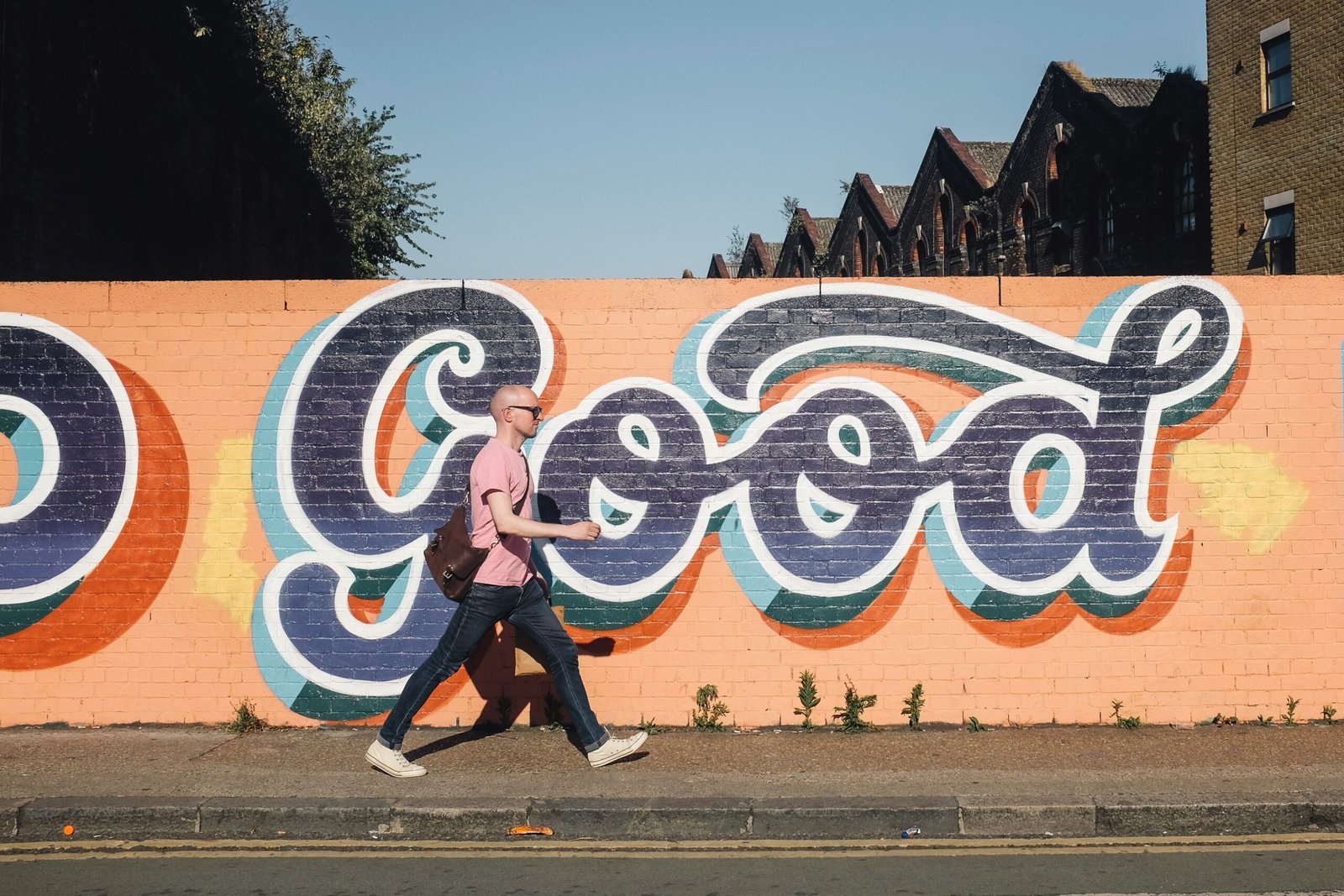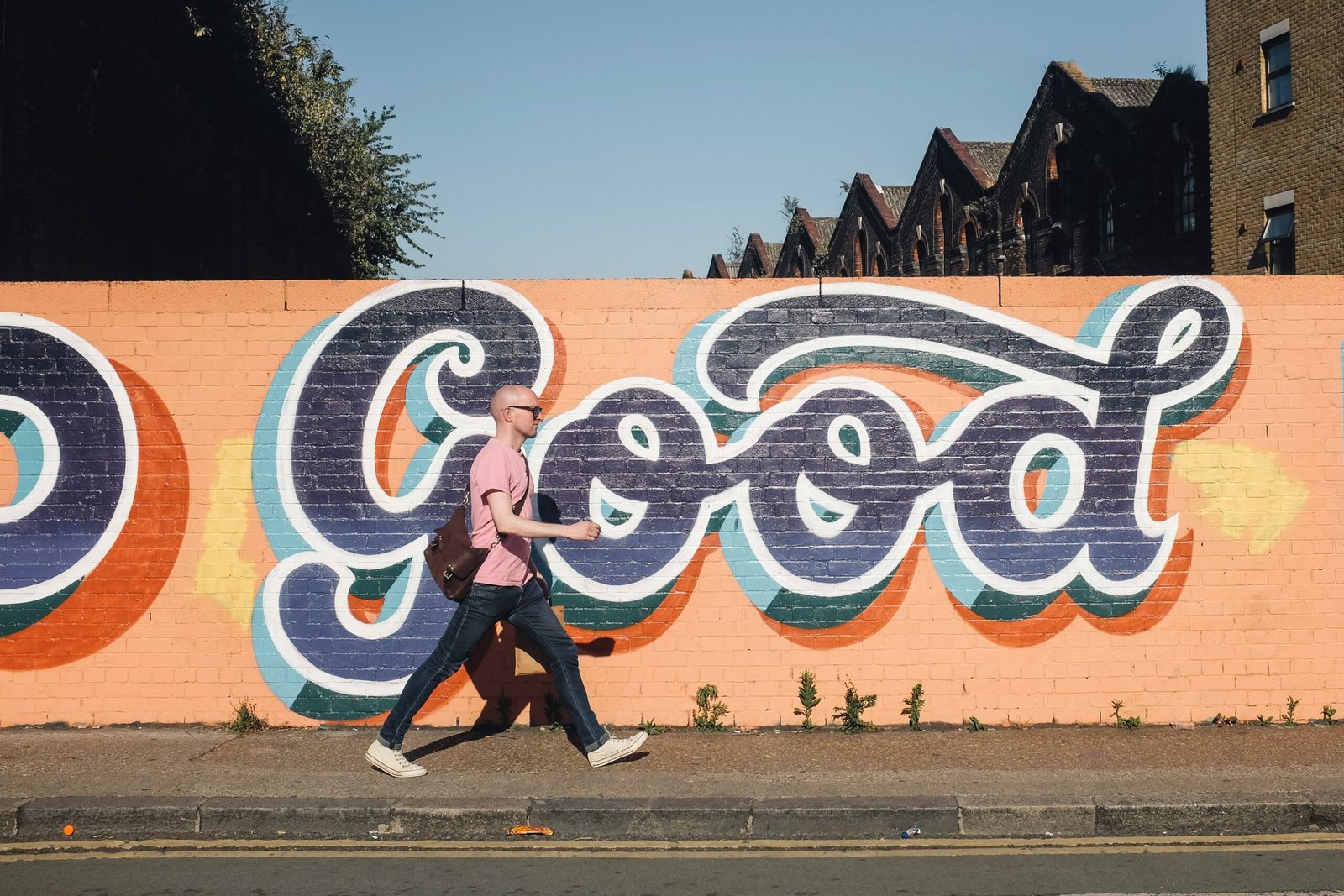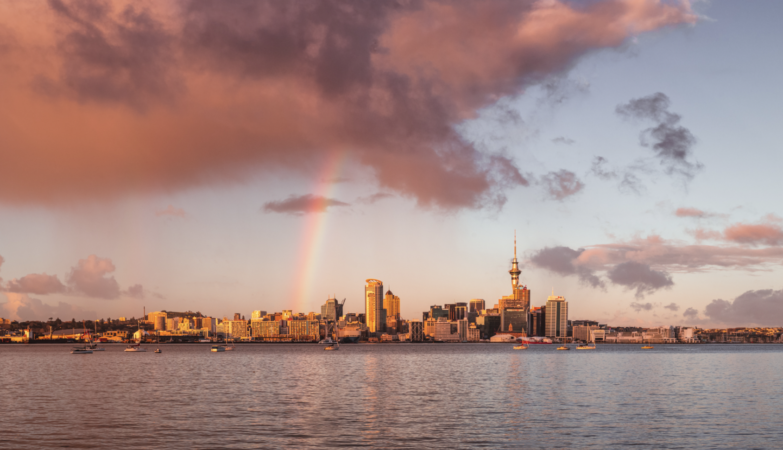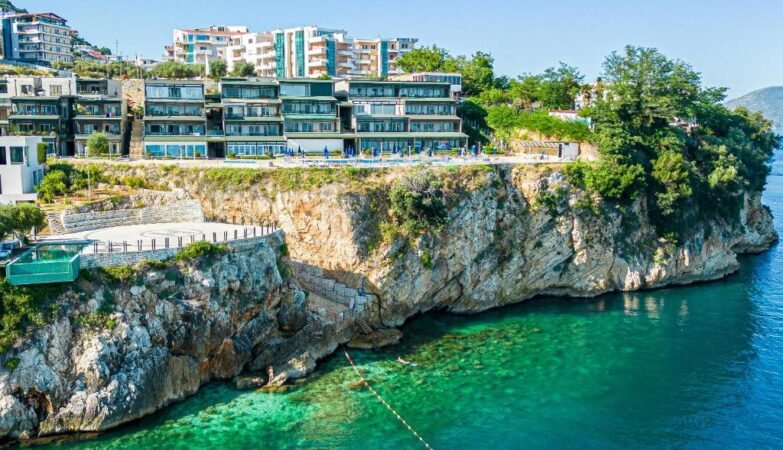Introduction to Urban Art in Berlin
Urban art, often characterized by its spontaneous and vibrant nature, plays a significant role in shaping the cultural identity of cities worldwide. In Berlin, a city renowned for its tumultuous history and dynamic cultural evolution, urban art has emerged as a profound testament to its multifaceted artistic expression. Known as a melting pot for creatives, Berlin attracts artists from various backgrounds, infusing the city with diverse perspectives and styles. This confluence of ideas is not only spectacular to view but also vital to understanding the socio-political narratives that urban art frequently communicates.
Berlin’s streets are living galleries, presenting a rich tapestry of murals, graffiti, and installations that often challenge societal norms and provoke thought. The city’s post-reunification landscape, marked by rapid transformation, has served as fertile ground for urban artists. They use the city’s walls, derelict buildings, and public spaces as canvases to express their thoughts, convey messages, and challenge the status quo. As such, urban art has become an integral part of Berlin’s cultural landscape, transcending traditional art forms and embedding itself deeply within the city’s social fabric.
While many visitors are drawn to the more famous spots like Kreuzberg and Friedrichshain, lesser-known districts are equally rich in artistic expression. Neighborhoods such as Neukölln and Wedding showcase the often-overlooked urban art scenes that contribute to Berlin’s vibrant cultural narrative. These areas not only provide a platform for local artists but also invite exploration and discovery, allowing audiences to engage with art in a more intimate setting. By venturing beyond the well-trodden paths, observers can gain a deeper appreciation for the diverse and evolving landscape of urban art in Berlin, reflecting the city’s ongoing dialogue between history, politics, and creativity.
Why Lesser-Known Districts Matter
Exploring lesser-known districts in Berlin offers a unique and authentic experience that contrasts sharply with the more commercialized areas of the city. These districts serve as fertile ground for grassroots artists and innovative works that often remain hidden from mainstream audiences. By venturing into these neighborhoods, art enthusiasts can uncover a vibrant tapestry of urban creativity that reflects the true essence of the city’s art scene. The art found in these lesser-known areas frequently originates from local artists who draw upon their own experiences and surroundings, thus providing a more personal and relatable perspective.
Moreover, these districts serve as important cultural hubs, often showcasing experimental art that challenges societal norms and prompts critical reflection. Unlike established galleries in tourist hotspots, the art in lesser-known neighborhoods tends to prioritize thought-provoking themes and social commentary. This focus can deepen the viewer’s understanding of the socio-political context surrounding the artwork, revealing insights into local issues and histories that are not as visible in mainstream art venues.
Additionally, engaging with lesser-known districts allows visitors to forge a more meaningful connection with the city’s culture. The streets adorned with murals, installations, and graffiti tell stories of the community, embodying their struggles, aspirations, and collective identity. In this way, lesser-known areas become integral to understanding the broader narrative of Berlin’s diverse urban landscape. Thus, exploring these districts is not just about discovering art; it is about experiencing the authentic spirit of the city itself. In light of this, it is evident that visiting these neighborhoods is essential for anyone seeking a comprehensive appreciation of Berlin’s dynamic and evolving urban art scene.
Top Districts for Urban Art Walks
Berlin is well-known for its vibrant urban art scene, and while many tourists flock to popular neighborhoods, there are lesser-known districts that offer a wealth of artistic expression. Exploring these areas can provide a refreshing perspective on the city’s culture and creativity. Here are several top districts to consider for an enriching urban art walk.
One such district is Friedrichshain. Once a preferred location for artists, it now boasts an incredible number of murals and graffiti. Highlights include the iconic East Side Gallery, a 1.3-kilometer stretch of the Berlin Wall adorned with diverse artworks that reflect historical narratives and contemporary themes. Friedrichshain’s streets are lined with colorful murals that showcase local talent, making it an essential stop for urban art enthusiasts.
Kreuzberg is another district that should not be overlooked. This area is characterized by its multicultural atmosphere and progressive artistic expressions. Various walls and buildings serve as canvases for local street artists, contributing to a constantly evolving outdoor gallery. Be sure to check out the vibrant murals in Görlitzer Park, where the convergence of art and social issues often leads to thought-provoking installations.
Moving to Neukölln, visitors will discover an eclectic mix of traditional and contemporary art. The district’s burgeoning art scene is embodied in its various galleries and art collectives, many of which feature street art. The myriad cafes and bars often host events that celebrate local artists, creating an engaging environment for art lovers. There, you can find remarkable murals reflecting the community’s spirit and creativity.
Finally, Wedding has emerged as a hotspot for urban art, with its diverse neighborhoods filled with innovative street art. This district’s less commercialized environment allows for more daring artistic expressions, where artists often collaborate on large-scale projects that transform the streets into an open-air exhibition. Wedding is a treasure trove for those looking to explore the interplay between urban life and art.
These districts each offer unique insights into Berlin’s rich urban art landscape, providing an exciting basis for an art walk that showcases the city’s creativity beyond the mainstream attractions.
Must-See Artworks and Artists
The vibrant urban art scene in Berlin extends far beyond iconic landmarks, diving deep into the city’s lesser-known districts. A close look at these areas reveals an extraordinary collection of murals and street installations that captivate passersby. One particularly notable artwork can be found in the district of Kreuzberg, where the mural “My Urban Nest” by the artist El Bocho brings a whimsical perspective to daily life by portraying endearing characters that resonate with the community. El Bocho’s ability to merge humor with social commentary makes his work a prominent highlight for those exploring urban art walks in Berlin.
Moving on to the district of Neukölln, the piece “Seussical” by the artist Various & Gould is a compelling creation that intricately blends bright colors and detailed imagery. This mural is not only visually striking but also serves as an invitation for viewers to consider the cultural interplay within the city. The artists’ choice to incorporate references to pop culture further emphasizes the dynamic nature of urban art, effectively communicating multifaceted messages.
Another noteworthy spot lies in Friedrichshain, showcasing the monumental work “Kiss of Life” by the renowned artist, Katerina Jebb. This powerful mural conveys themes of love, connection, and the fragility of human relationships. Katerina’s background as a photographer allows her to seamlessly blend realism with abstraction, giving her art an evocative edge. Each brushstroke captures deep emotional currents, encouraging onlookers to reflect on the connections that shape our urban environments.
Through these examples, we begin to understand the profound narratives that urban artworks share, alongside the intentions of the artists who create them. The collective cultural expressions found in Berlin’s streets embody the spirit of the city, making exploration an essential part of appreciating its urban art landscape.
Self-Guided Urban Art Routes
Exploring the vibrant urban art scene in Berlin’s lesser-known districts offers an enriching experience. Self-guided urban art routes allow art enthusiasts and casual observers alike to immerse themselves at their own pace. These routes can be navigated by foot, providing an intimate view of the artworks that adorn the streets.
One recommended starting point is the district of Friedrichshain, known for its richly diverse mural scene. Begin at the intersection of Boxhagener Platz and Wühlischstraße, where one can find several large-scale murals. From there, proceed towards the East Side Gallery, a preserved section of the Berlin Wall, showcasing numerous artworks that convey powerful messages. A suggested pathway through this area could include stops at specific pieces such as the iconic “Fraternal Kiss” and several other installations highlighting different artists’ styles.
Next, head towards Kreuzberg, another hotspot for urban art. The route can lead you through Oranienstraße, where street art blends seamlessly with local cafés and shops. Here, look for hidden gems tucked away in alleyways or around corners. It is advisable to set aside a full afternoon for this route to fully appreciate each piece and the context in which it exists. Additionally, bringing along a camera to capture these unique works can enhance the overall experience.
When planning your urban art walk, consider timing your visit during daylight hours for optimal visibility and safety. Early weekends are ideal, as you may encounter local art markets or events that coincide with your exploration. Always remember to stay aware of your surroundings and plan your route in advance to make the most of your journey through Berlin’s urban art landscape.
Local Art Events and Workshops
Berlin is renowned for its vibrant urban art scene, with lesser-known districts offering a plethora of artistic events and workshops that celebrate local creativity. Throughout the year, various festivals and exhibitions emerge in these neighborhoods, allowing residents and visitors alike to engage with the flourishing art community. These events often highlight not only established artists but also emerging talents, providing them with a platform to showcase their work to a broader audience.
Among the notable events is the Berlin Urban Art Festival, which takes place annually and features a variety of art forms, including street art, graffiti, and performance art. This festival encourages international collaboration and often invites local artists to participate in workshops that teach techniques and strategies specific to urban art. Moreover, during the summer months, numerous open-air exhibitions pop up in parks and community spaces, transforming these locations into vibrant galleries that allow the public to interact with art in a casual and accessible setting.
In addition to festivals, many local galleries and cultural institutions in these districts host workshops that cater to both novice and experienced artists. These workshops range from techniques in mural painting to the intricacies of digital art, offering something for everyone interested in urban art. Participants have the unique opportunity to learn directly from local artists, thereby forging connections within the community and supporting the creative economy.
To stay updated about local art events, residents can subscribe to neighborhood newsletters, follow local artists and galleries on social media, or visit community bulletin boards. Engaging with these resources will ensure that art enthusiasts are aware of upcoming exhibitions, festivals, and workshops, thereby fostering deeper connections with the local art scene.
The Role of Community in Urban Art
Urban art has increasingly become a vital aspect of community identity, playing a significant role in fostering connections among residents. The intricate relationship between local communities and urban art manifests in various ways, as the latter not only serves as a medium of expression but also as a tool for healing, social commentary, and empowerment. Community engagement is paramount for successful urban art initiatives, as the most impactful projects often arise from the collective voice and needs of the neighborhood.
When exploring urban art, it is essential to recognize that these artworks reflect the identity and history of the communities they inhabit. Local artists frequently draw inspiration from their surroundings, channeling communal stories into their creations. Therefore, when residents actively participate in urban art projects, they contribute to the narrative woven into their neighborhoods. This can transform blank walls into canvases of culture and history, turning the area into a living gallery that celebrates local heritage.
Moreover, community engagement encourages collaboration among residents in the artistic process, fostering a sense of ownership over the art. When people feel invested in their surroundings, they are more likely to take pride in their neighborhood, creating stronger social bonds. Initiatives such as workshops and public art meetings empower locals to voice their ideas and preferences, leading to artistic expressions that resonate on a personal level.
In addition to enhancing aesthetics, urban art has the potential to address communal issues, sparking conversations about social justice, diversity, and the environment. These themes often arise from grassroots movements, as local stakeholders unite to voice their concerns through the medium of urban art. As a result, urban art becomes a reflection of collective aspirations and a means to advocate for change, making it an essential element of community identity.
Sustainable Urban Art Practices
Sustainability has emerged as a pivotal theme within the realm of urban art, especially in cities like Berlin, where artists and communities are increasingly conscientious about their ecological footprint. In recent years, a growing number of artists have begun to incorporate eco-friendly materials into their work. This approach involves using non-toxic paints, recycled materials, and natural elements to create art installations that not only captivate observers but also minimize environmental impact. By choosing these sustainable materials, artists are sending a powerful message about the importance of ecological responsibility.
Moreover, initiatives aimed at improving public spaces are becoming increasingly integrated into urban art practices. Many artists collaborate with local governments and community organizations to transform neglected areas into vibrant art hubs. This process often involves community engagement, where residents contribute their ideas and resources, ensuring that the projects reflect the unique character of the neighborhoods. By fostering such collaborations, urban art becomes a tool for social cohesion, revitalizing areas while promoting a culture of sustainability.
Another significant aspect of sustainable urban art practices in Berlin is the emphasis on awareness and education. Artists frequently address environmental themes through their works, prompting critical discussions about sustainability and urban living. This not only raises public awareness but also encourages communities to adopt more sustainable practices in their daily lives. Through workshops, talks, and participatory events, these artists share their knowledge and motivate residents to become involved in sustainability efforts within their own neighborhoods.
In conclusion, Berlin’s urban art scene is increasingly characterized by sustainable practices that not only beautify urban landscapes but also engage communities in vital conversations about the environment. By merging creativity with ecological consciousness, artists are not only enhancing public spaces but also fostering a deeper understanding of sustainability among citizens. This progressive movement highlights the potential of urban art as a catalyst for positive change, demonstrating that creativity and environmental responsibility can indeed coexist harmoniously.
Concluding Thoughts on Berlin’s Urban Art Scene
Berlin’s urban art scene is a vibrant reflection of the city’s rich cultural tapestry, particularly evident in its lesser-known districts. These areas often serve as canvases for artists who wish to express their individual creativity and convey social messages, resulting in an eclectic mix of murals, street art, and installations that can challenge conventional norms. The importance of exploring these neighborhoods cannot be overstated; they provide a unique perspective on Berlin’s artistic diversity and the socio-political narratives that inform it.
Engaging with urban art in these districts fosters a deeper connection with the community and its residents. As visitors embark on urban art walks, they become part of an interactive experience that captures the essence of Berlin’s evolving identity. These art walks not only highlight the aesthetic appeal of the artworks but also encourage conversations around the themes portrayed, such as gentrification, environmental issues, and cultural heritage. In this way, one begins to appreciate how urban art can serve as both a form of protest and celebration, reflecting the complexities of city life.
Moreover, the exploration of lesser-known districts allows individuals to uncover hidden gems, often missed by those who confine their experiences to more popular tourist spots. By stepping off the beaten path, one can encounter lesser-known artists, participate in community events, and engage with local culture. This kind of immersion allows art enthusiasts and casual observers alike to experience the transformative power of urban art, as it shapes community identity and fosters a sense of belonging.
We encourage readers to embrace this dynamic aspect of Berlin and to share their own experiences of urban art. Discovering the narratives behind the artworks can greatly enrich one’s understanding of the city and its people. Therefore, next time you visit Berlin, consider venturing into its lesser-explored districts and witness firsthand how urban art offers a unique lens through which to appreciate local culture.





